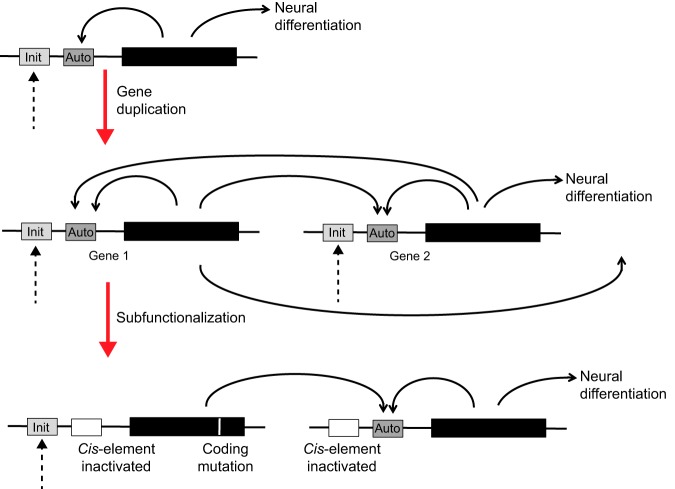Fig. 3.
Illustration of subfunctionalization. A hypothetical proneural gene with separate enhancers controlling initiation versus autoregulatory transcriptional activities is shown (top). The complete duplication of this gene (middle) produces two functionally redundant, identical genes (genes 1 and 2) that are expected to positively regulate one another through inheritance of the autoregulatory machinery. However, natural selection does not have to maintain redundant functions and can give rise to subfunctionalization (bottom). In the example shown, protein 1 has lost the capacity to specify neural differentiation because of a missense mutation in the coding region and has also lost the ability to autoregulate through divergence of its regulatory sequences, but remains functional as long as protein 1 cross-activates gene 2 and protein 2 then specifies neuronal differentiation. In this example, it would not be necessary for gene 2 to retain regulatory sequences for initiation, since this subfunction could be performed by gene 1. Duplicated genes 1 and 2 would now appear to have temporally distinct roles, although together they fulfill the function of a single ancestral gene. In principle, many other interdependent network topologies can arise through other patterns of subfunctionalization (Taylor and Raes, 2004; Conant and Wolfe, 2008).

